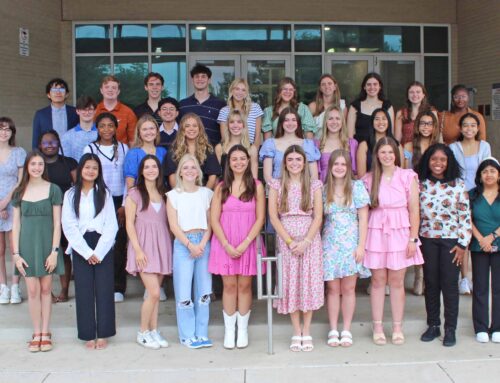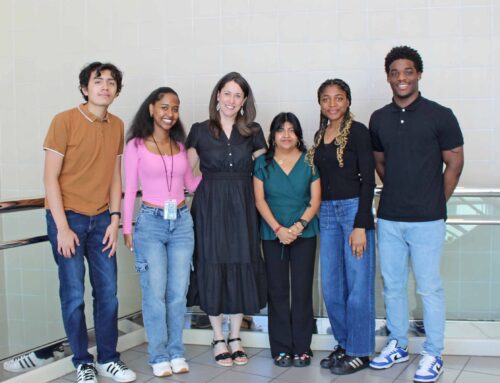A child, Rayelynn Dady could stay out all day exploring with friends, returning home as the sun began to set and dinner beckoned.
Today, this neighborhood mother of two feels stricter rules are necessary to keep her two teenage sons safe.
“A lot was different when we were growing up,” she says. “My boys think I’m overprotective and old-fashioned because they have to let me know where they are all the time.”
DO YOU BELIEVE CRIME IS DECLINING?
Most of us have heard the good news that crime is down. The FBI has announced that serious crime reported to the police has dropped for the sixth consecutive year, with a 4 percent decrease for 1997. A 9 percent decline was noted in murders and robberies, the largest decline in a violent-crime category.
This national trend is mirrored in our own neighborhoods, where records from the Northeast Operations Division show declines last year in every category except for business burglaries. Crimes such as murder, rape and burglaries of homes and vehicles have been steadily dropping since 1994 and 1995.
But these numbers, for many, don’t add up to a greater sense of security. Even in decline, crime has made its mark.
For our own safety, we are taught that the world is a dangerous place where anyone can be a victim.
“When my older son gets in the car, he does what I do – he locks the doors,” Dady says. “He does that, and I’m glad he does.”
LIVING IN A DANGEROUS WORLD
Neighborhood mom Karla DeLuca also has heard her share of complaints about “overprotective” rules from Amanda, 16, and Tony, 10. For one, Tony, the only child on the street who attends Aiken Elementary, isn’t allowed to walk to school alone.
“I walk with him. He really doesn’t like that,” DeLuca says. “But I don’t think it’s safe for a child to walk through an empty street by himself.”
I’m worried about people who spot children and snatch them. But I don’t tell him that.”
Still, DeLuca often finds herself having candid conversations about crime with her children. Last year, they received five notices from the school district about sex offenders in the area. And one morning, the sound of breaking glass alerted the family to a break-in at a nearby home.
“You can’t keep it from the kids when it’s happening right next door,” she says. “Hearing that at 10 o’clock on a Saturday – it’s kind of scary.”
Because of their talks, the “kids are aware” of what precautions must be taken.
“They don’t dare leave the garage door open,” DeLuca says. “They can’t just go to the school and play with friends. Someone older has to be there.”
DeLuca practices what she preaches. She is careful of where she parks. If she sees someone suspicious in the alley, she will drive on and call the police.
“Better safe than sorry,” she says. But her wariness hasn’t evolved into omnipresent fear.
“I’d rather not spend my life expecting a crime at any minute. You can’t be stupid, but you can’t live your life in total fear of what could happen.”
Dady, too, walks a line between teaching her sons to be careful without making them overly fearful.
“I teach them to be aware of their surroundings,” Dady says. “To pay attention to cars you’re not familiar with.”
“Don’t let your guard down. Don’t be complacent.”
She describes Taylor, 15, as “very social and very friendly with people.” She has talked to him about not letting people take advantage of his trusting nature.
“We are very open with things, teaching when they are old enough to understand and accept,” she says. “But I wouldn’t want them to be scared of everyone. It’s a very fine line.”
Dady takes some comfort in the Expanded Neighborhood Patrol program at work in Oak Highlands, where neighbors provide funding to have off-duty police officers patrol the area.
“It’s wonderful,” she says. “Patrolmen drive through the neighborhood. You see them night and day.”
“When there is suspicious activity, they are right there,” she says. “I feel much safer because of that.”
Also, both schools the boys attend – Forest Meadow Junior High and Lake Highlands High School – have principals who immediately jump on any signs of trouble, Dady says.
“Both schools have done an excellent job of helping the parents feel safe, and that their children aren’t in any danger,” Dady says.
COMMUNITY IS KEY
That sense of community spirit – and greater security – comes when people are fighting crime in a positive way, say police and other criminal justice experts.
Sgt. Mark Smith, supervisor of the Inner-Community Policing program at Northeast, knows that many factors have contributed to the crime dip. This 18-year police veteran says programs such as Expanded Neighborhood Patrol and Volunteers in Patrol (where police-trained volunteers patrol the neighborhood in order to report suspicious activity to officers) have made a difference.
The ICP program involves dividing Northeast into six sections, with each receiving additional officers committed to building relationships with neighbors, business owners, apartment managers and crime groups in a way that can’t be done through traditional “call and response” patrolling.
“I want to give credit there to the VIPs,” Smith says. “Because of them, because of Crime Watch groups, we are able to take the bulls by the horns.
“Some police officers want to be the tough guys out there. But we can’t be everywhere,” Smith says. “We need those eyes and ears. It takes involvement in the community. It takes saying: We need help.”
Northeast is now seeing a reversal of the “broken window” theory, where if one neighborhood house has a broken window that goes unfixed, other residents around that house follow suit – eventually leading to deterioration in that neighborhood.
“We have the opposite,” Smith says. “People are watching. People are taking pride.”
ACTION, NOT FEAR
For most people, Smith says, staying aware of crime and its potential to strike will only help.
“It’s a sign of the times,” Smith says. “Most people have not grown up with a neighborhood where there is not a crime problem. It’s the exact opposite.”
That awareness can be constructive or destructive, he says.
“If crime affects us to where we have bars on windows, 16 locks on doors and don’t trust anyone – that’s not the way life should be,” he says.
“I don’t like burglar bars. It’s like you’re in a prison. Instead, be a catalyst to change. Get involved. Then you don’t need burglar bars.”
That involvement can take the form of joining Crime Watch or volunteering in after-school programs – whatever the needs are in your neighborhood.
“When I moved into my particular neighborhood, some people thought I was crazy. Why move into that part of town?” he says. “I know what’s needed over there, and I can handle it rather than move to the suburbs.”
Dr. Richard Hawkins, an SMU professor specializing in criminal justice, echoes the virtues of community involvement.
“From the perspective of the criminal mind, you can tell just driving through when it’s a community rather than a collection of unrelated houses,” Hawkins says.
“One reason why apartment complexes are at risk is because they are large and no one knows anyone.”
“An organized community is more likely to report crimes to the police. An invasion of one is an invasion into all,” he says.
“In the ’60s, there was more antagonism between people in the community and police. In the era of community policing, that’s changed, and that’s a positive.”
These programs offer psychological as well as practical comfort, Hawkins says.
“My view of those programs is that they just benefit people, even if they’re not necessarily crime-reducing. They solve the psychological problem of isolation and fear of being alone,” he says.
“An additional feature is that people are more happy and satisfied with urban life.”
Ultimately, crime in a neighborhood evokes either a “fight or flight” response.
“People think they just have to have a better neighborhood or a rural environment, and they would be so much better off,” Hawkins says. “Those who leave will be sorely disappointed to discover that crime is not just an urban deviation.
“At some point, crime forces people to stop and take a stand. You can’t keep running,” he says.
“You can become someone armed to the teeth building a militia. Or you can have a strategy that involves other people building a community.”
FINDING A BALANCE
Be aware. Get involved. When it comes to being safety-smart but not crime-crazy, knowledge can be a powerful weapon.
Chris Eckhardt, a clinical psychologist who teaches at SMU, says being aware of crime risks “enhances your ability to get out of harm’s way.”
“The police have done an outstanding job of communicating with residents about prevention efforts,” he says. “It’s a good idea to slow people down.”
“Overall, that brings more individual peace of mind. It probably makes people more aware of situations that could be threatening or dangerous.”
Eckhardt describes the media reports on “road rage” as a case where people have learned to protect themselves by changing behavior.
“In the last three or four years, we’ve heard a lot about that,” he says. “And I’m perceiving that people are less likely to stretch a finger out or speed up when someone cuts them off.”
Another example: When two people are involved in a physical altercation, help by calling the police.
“The most dangerous thing you can do at this point is to step in,” Eckhardt says. “So many people are injured as the third party.”
“When you’re aware of a dangerous situation and what triggers it, that’s a good thing.”
Sgt. Smith agrees and compares those who go too far to the hypochondriacs who continue to gather information to feed their theories.
“Most people will not become obsessed,” Smith says. “The best person we’ve got is the little old lady who knows everything.
“She’s not obsessed with writing down every license plate she sees to give to us. She’s not paranoid.”
To Hawkins, crime awareness needs only be tempered with moderation.
“There are people in this country who live behind burglar bars,” Hawkins says. “They are in a prison more than the guys in prison.”
“What’s needed is to try and maximize your freedom without doing anything stupid. That’s not eloquent, but that’s where we are in the ’90s.”





